AFFILIATE MARKETING
5 Steps & Expert Tips Included

Want to know how to find low-competition keywords that rank?
No problem.
In this post, you’ll discover 5 simple steps you can take to make the process a breeze.
You’ll also learn:
- How to do keyword research
- Which tools to use
- How to validate competitiveness
- And much more.
Let’s get started.
How to Find Low Competition Keywords – Step by Step
In this section, we’ll look at the steps involved in doing research for low-competition keywords. Then, after the steps, we’ll look at different tools available and how to use them.
By the end of this section, you’ll be able to approach keyword research with confidence and find keywords you know you can rank for.
Step 1: Find Seed Keywords
Before you can find low-competition keywords, you need a starting point. And that starts with seed keywords.
Seed keywords are broad keyword topics related to your niche, and they help you brainstorm ideas.
They tend to be one or two words, are highly competitive, and have high search volumes.
Think of a seed keyword as a large net when fishing. You cast your seed keyword net out into the web and find hyper-relevant, low-competition keywords.
I’ll show you different ways you can do this later.
But here’s a quick example.
Let’s say your blog is in the tech niche. A seed keyword could be any of the following:
- Digital cameras
- Laptops
- PC Monitors
- Drones
- And so on…
You’ll then use a keyword research tool or Google to narrow down your list into more specific keywords. Such as:
- Best lens for sony cameras
- Best laptops with HD webcam
- How to clean a pc monitor
- Best type of drone for photography.
To find seed keywords, you can use Google, Amazon, Reddit, or Quora to give you some ideas.
Now you can move on to the next step, which is to gather your list of keyword ideas and add them to a spreadsheet.
Step 2: Gather Your Keywords
When performing keyword research for low competitive keywords, it’s a good idea to store them somewhere to keep things organized.
Google Sheets will work fine, or you can use Excel or AirTable.
Create columns for the keywords, one for search volumes and another for keyword difficulty.
When you find new keywords, add them to your sheet.
Many of the keywords you find will have low search volume, but this shouldn’t put you off.
These keywords, also known as long-tail keywords, can be really powerful with the right blog content strategy.
Plus there are way more searches performed on Google that are low competition than there are high competition keywords.
This is where the name long-tail comes from because these keywords show up at the end of the search demand curve.

This means that smaller sites that target lots of low-competition keywords still have a lot of potential.
Once you’ve completed all the steps below, you’ll have a list of low-competition keywords you can target on your blog.
Step 3: Validate Keyword Intent
This step is really important because without validating the keyword intent, you might never rank for the keyword.
To clarify, keyword intent (or search intent) is the context behind a search. That means the keyword needs to match the type of content the searcher is looking for.
For example, someone searching for cheap blenders isn’t looking for recommendations. They just want to see cheap blenders and make a purchase.
Whereas the search best cheap blenders has the intent of finding recommendations before they make a decision.
The best way to know what the search intent is is to do a search for the term and see what the results show.
Then, you can add this detail to your spreadsheet.
Step 4: Know Your Content Types
Knowing the different types of blog content will help you target your audience more effectively.
Additionally, knowing how these content types relate to the keywords you find makes the blogging process much easier.
The first content type is informational posts which educate the reader and provide value.
These posts relate to keywords that start with how, why, what, and so on. They might also contain the words guide, tutorial, and tips.
When you find keywords like these, you know they are informational and tend to attract people at the top or middle of the funnel.
The top of the funnel is where people aren’t fully aware of a problem yet, and need to do more research before being ready to buy something.
And the middle of the funnel is where people are in research mode. They know of a specific problem and they are trying to solve it by searching these keywords.
A second content type is commercial content. These are posts that help the reader make a buying decision.
They relate to keywords that contain the words best, review, and vs. They also attract people at the bottom of the funnel, which are people ready to buy.
When you’re gathering your list of keywords, you’ll notice that informational keywords tend to be less competitive than commercial ones.
That’s because more websites are going after commercial keywords, as they will bring in more commissions.
With that said, there are still tons of low competition keywords with commercial intent. However, it’s good practice to find a combination of both types of content for an effective strategy.
Step 5: Validate Keyword Competitiveness
The last step is often the most appealing for many people. And that is to validate whether the keywords you find are low competition.
This can be done in a few ways, but the easiest way is to use a tool with keyword difficulty.
Depending on the keyword research tool, keyword difficulty is measured in different ways.
Factors that are considered by these tools include:
- Keywords in the SEO title and description
- Domain and page authority
- Backlinks.
The difficulty score is usually between 0-100, with low competition keywords below 30.
Thus, providing you with the green light to target the keyword on your site.
Of course, it’s still important to do further analysis of the top-ranking pages so you know what you’re up against.
It’s also important to make sure you can create content for the keyword that matches the search intent, as discussed above.
Now you know all the steps involved, below are some tips and tools you can use to make the process a breeze.
Expert Tips to Help You Find Low Competition Keywords
In this section, we’ll look at some specific techniques you can perform to find low-competition keywords.
Brainstorm Topic Ideas for Seed Keywords
Before you start, it’s best to find some seed keywords that you can expand on. This can be fairly straightforward, depending on the niche and your knowledge of it.
For starters, searching Quora for your main keyword can help you find more seed keywords you hadn’t thought of:

Doing the same thing on Reddit brings up some interesting conversations. And more seed keyword Ideas:
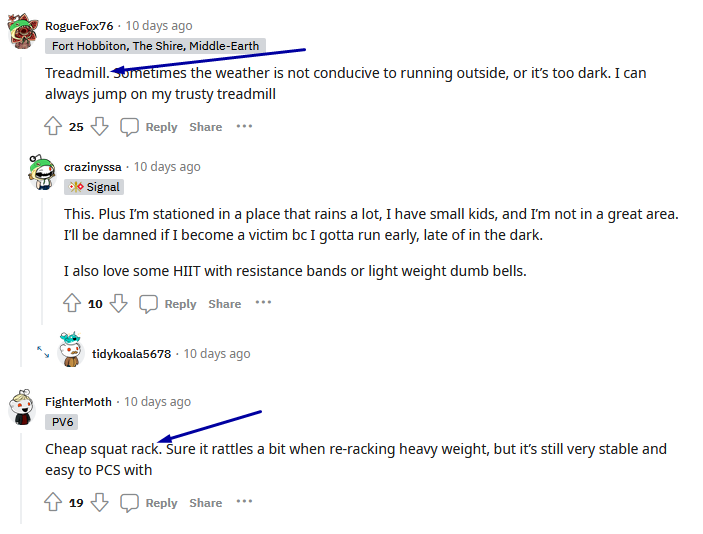
Another place you can find seed keywords is Amazon. Search Google for amazon bestsellers “your niche” to find products in your niche.
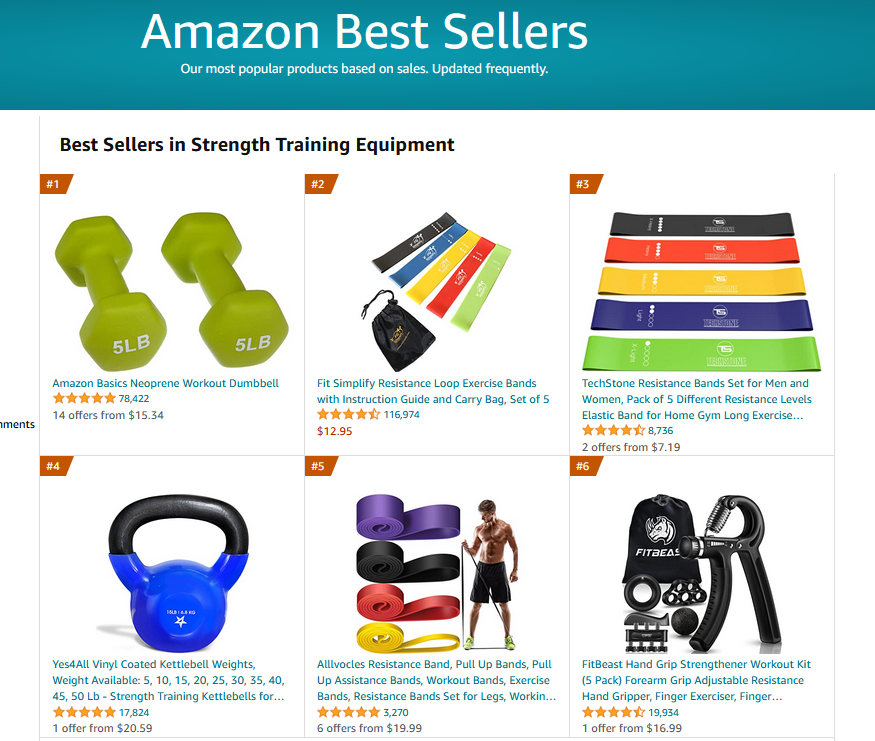
From your category, you’ll see a list of the top 100 products. Any one of these products could be used as a seed keyword to could give you more ideas.
Lastly, Pinterest is another great place to find seed keywords. This can help you think of ideas a little more outside the box.
It’ll also give you ideas of the types of content other people in your niche are creating.
This search for “macrame” led me to this Pin, which led me to a huge list of macrame terms I could use as seed keywords.

To keep all your ideas organized and to expand on them, you could create a mindmap like this one:

This was made with a free mind mapping tool called Coggle.it. Place your niche in the center and let ideas come to you.
Use Keyword Research Tools that Measure Keyword Difficulty
The fastest way to find low-competition keywords is to use a keyword research tool with a keyword difficulty score.
This makes it so much easier to validate whether you’ll be able to rank for the terms on your site.
The first tool we’ll look at is SEMRush. This tool categorizes the keyword types into columns. Keyword variations and questions:
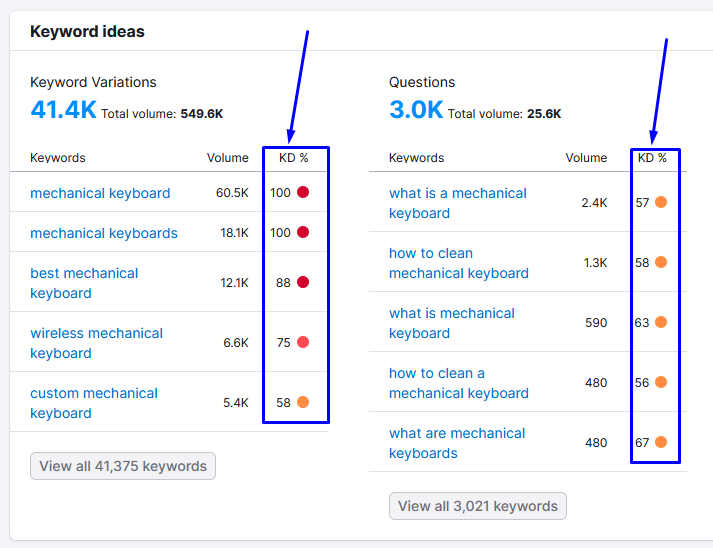
We can see that the question-related keywords have a lower KD score. If you click on this list, you can filter the available keywords by keyword difficulty:

All these keywords it returned have a KD score of less than 30, which is considered by SEMRush, easy to rank for.
You can get a 7-day free trial with SEMRush and apply even more filters such as search volume. This will help you find low competition keywords with high search volume.
Searching for the same seed keyword mechanical keyboard in SerpStat returns a variety of results.

You can also filter the list to include keywords that contain specific words. Words such as how, what, can, and why will return question-related keywords:

SerpStat is another paid tool and offers a free 7-day trial.
The last tool we’ll look at is SEMScoop. With this tool, you can take a list of keywords you find and import them into the software:

It’ll then display these in the list and show you the keyword difficulty when you click on them.

It’s a great way to get keyword difficulty scores for free.
Reverse Engineer the Competition
Using any of the tools mentioned above, this method enables you to find low-competition keywords fast.
But before you can use this method, you need to find one of your competitors.
To find competitors in your niche, search Google for best [your niche] blogs.
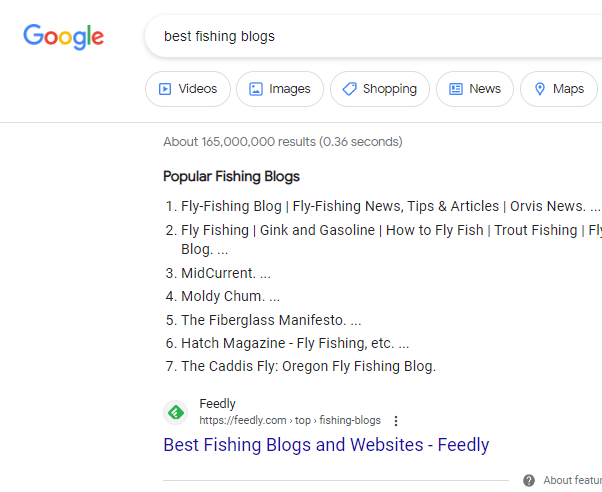
You’ll find articles that list the best blogs in your niche, which you can use to reverse engineer.
When you have a few competitors, search for them in the keyword tool of choice. I’m using Serpstat but of course, Semrush does this as well.
You’ll see a list of keywords this is already ranking for:

To narrow down the search, use the filters:
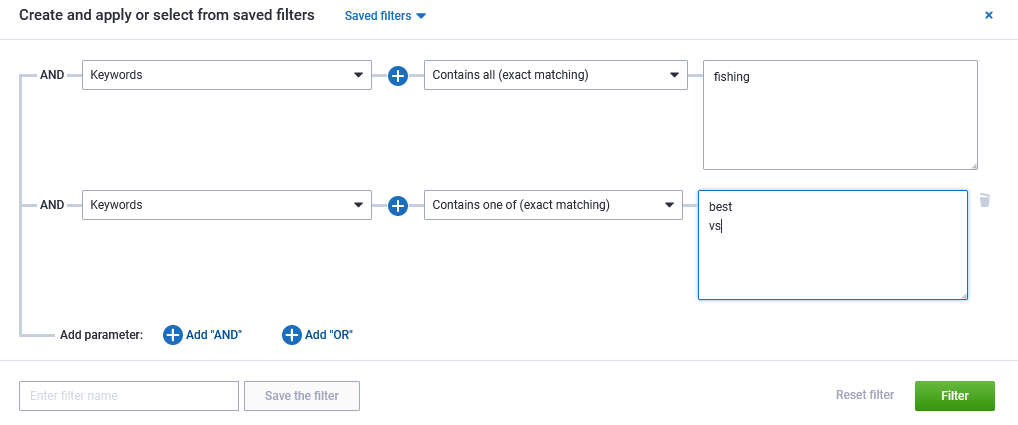
This example is for the fishing niche, so I’ve filtered for the word fishing, along with any occurrences of “best” or “vs”.
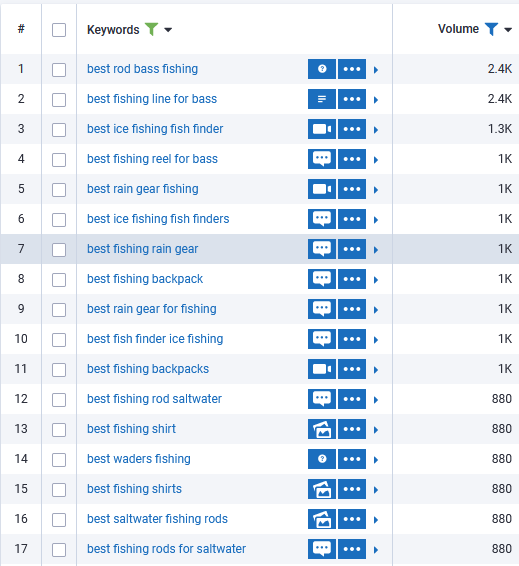
The results I found to have quite high search volumes, so they might be too competitive.
I can find easier keywords to target by filtering for lower search volumes.
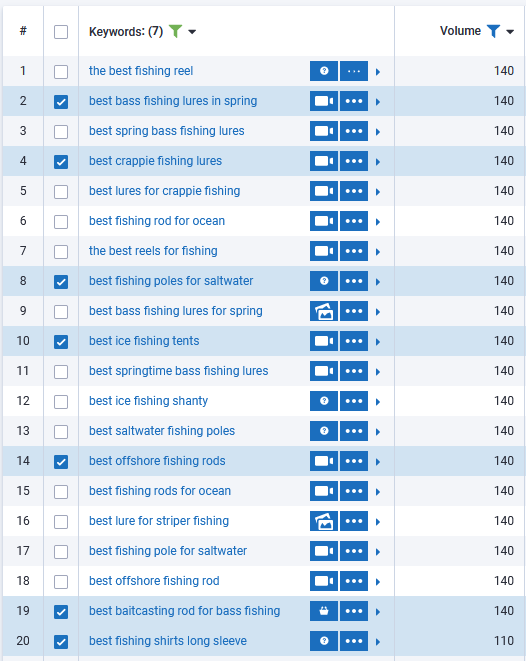
That’s better. Now I can use SEMScoop or another tool to check the keyword difficulty.
Sometimes it’s possible to find keywords with high search volume and a low KW score. Keep using the tools and persevere, and you’ll eventually find some.
Measure Keyword Competitiveness with a Free Tool
What if you don’t have a budget to spend on keyword tools? Is it still possible to find and validate if a keyword is easy to rank?
It sure is. Here’s how:
For this method, you’ll need to use Google Chrome and download the Chrome extension Mozbar:

Then start searching for your seed keywords or any variations you think could be low competition.
In my example, I’m searching for the best standing desks for gaming. Another tip is to add “affiliate disclosure” in quotations, like this:

Then what you want to look at are the PA and DA scores, which stand for Page Authority and Domain Authority.

The lower these scores are, the better chance you’ll have at ranking for them.
This site is in position 1 and has a Page Authority of 21 and a Domain of 28. As long as these scores are below 30, it should indicate low competition.
You can also add any sites you find to your list of competitors and use them to reverse engineer more keywords.
Just remember not to rely entirely on low-competition keywords. You need a decent amount of topically relevant content with good on-page SEO to get the best results.
Find Low Competition Keywords Using Google Search Console
This is a clever way to find low-competition keywords because your website is probably already ranking for them.
Head over to Google Search Console and click on Performance screen:

Then, go to your pages and look for one of your top-performing keywords based on either clicks or impressions:
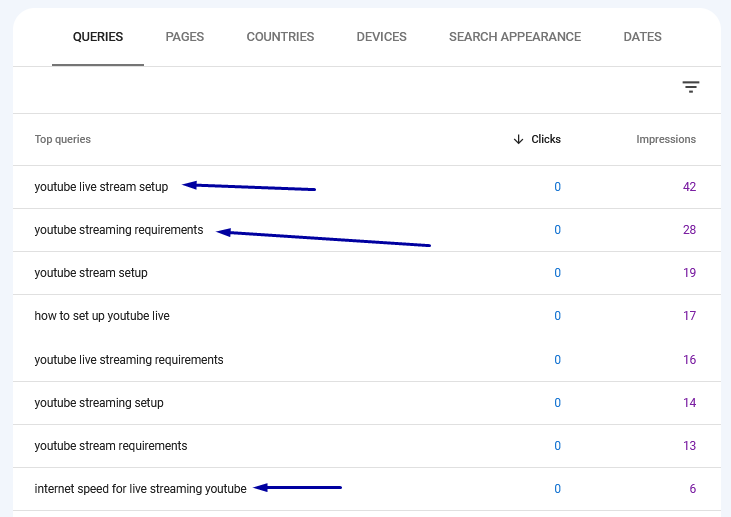
Click back over to Queries, and you’ll see a list of all the keywords that the post ranks for.
What you want to look for are keywords that are different from the main keyword of this page.
For example, the post on how to setup a youtube live stream on my tech blog also ranks for 3 other keywords I could target.

You could then use one of the tools mentioned in this post to find the search volumes.
However, it’s still a good practice to publish this content, as it will boost the SEO for the rest of your blog.
Just make sure you link each of the posts together for the best results. Our WordPress plugin Link Whisper can help with that.
Get Keyword Search Volumes (On a Budget)
If you want to know the search volume for keywords, but don’t have the budget for keyword tools, you’ll love this method.
This is also a great method if you’re not interested in keyword difficulty scores.
Sometimes the best way to validate a keyword is to publish content for it and see for yourself.
The first tool is Keywords Everywhere. This powerful tool turns your web browser into a keyword goldmine.
All you have to do is buy some credits (which are super cheap) and install the browser extension.
It works by displaying the search volumes of keywords that show up on any website you visit.
Here’s what it looks like in Google:
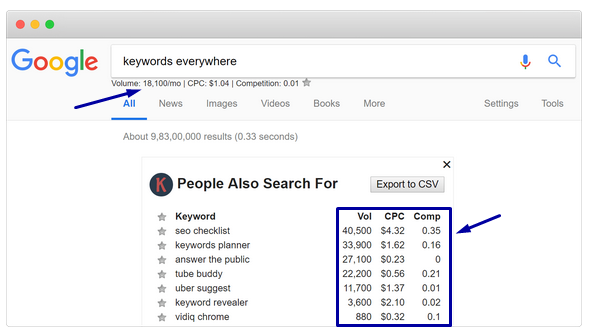
Pricing starts at $10 and that gives you 100,000 credits. Each keyword costs 1 credit and you can control exactly how many keywords show up.
You can read our Keywords Everywhere review to learn more.
Another tool for finding low competition keywords and their search volumes is Keyword Chef.
This keyword tool is great for finding long-tail keywords that are easier to rank for.
Here’s a search I did recently for mics for podcasting:
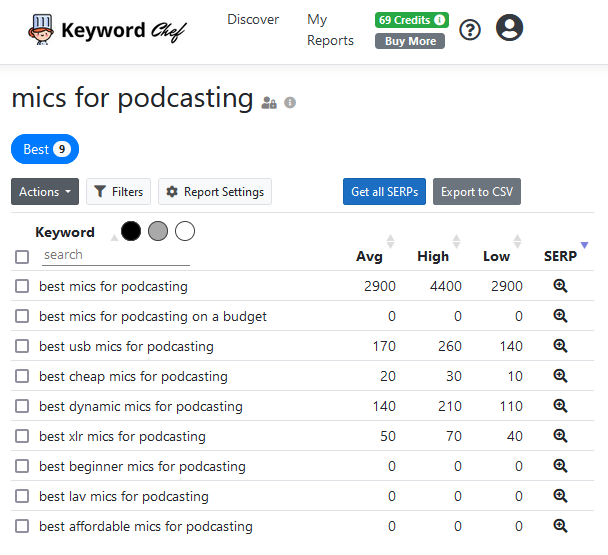
Keyword Chef offers a free trial, so you can test it out before you buy. Then the pricing starts at $20 for 1200 credits.
Conclusion: How to Find Low Competition Keywords
That concludes this post on how to find low-competition keywords. Follows these tips, and you’ll be ranking content in no time.
To summarize, start your search with seed keywords, gather keywords with tools like SEMRush, then validate their competition by using keyword difficulty scores.
Keep in mind that there are many other factors involved when ranking content. Low-competition keywords are just a good place to start.
AFFILIATE MARKETING
How to Control the Way People Think About You
Opinions expressed by Entrepreneur contributors are their own.
In today’s digital age, where personal branding and public perception play a vital role in success, strategic PR efforts have become more important than ever. Ulyses Osuna, the founder of Influencer Press, joined our show to share valuable insights on the significance of PR, the evolving landscape, and the keys to achieving business growth while maintaining a fulfilling personal life.
One of the key takeaways from the conversation was the importance of strategic PR efforts in building a personal brand and shaping public perception. Ulyses emphasized that PR is not just about getting media coverage; it’s about controlling the narrative and shaping how others perceive you. By strategically positioning yourself and your brand through effective PR, you can influence public opinion and establish yourself as an authority in your field. Another crucial aspect discussed was the power of leveraging relationships and connections.
Ulyses highlighted the “Buglight Concept,” which involves utilizing the support and connections of others to achieve success. By building strong relationships and leveraging the networks of influential individuals, you can significantly expand your reach and influence. Ulyses’s own success with Influencer Press is a testament to the power of connections in the PR world. While professional success is undoubtedly important, Ulyses also stressed the significance of balancing personal time and fulfillment. In the pursuit of business growth, it’s easy to neglect personal well-being and relationships. However, Ulyses emphasized that true success lies in finding a balance between professional achievements and personal happiness.
By prioritizing personal time and fulfillment, entrepreneurs can sustain long-term growth and avoid burnout. In the ever-evolving landscape of PR, Ulyses highlighted the need for a clear mission when seeking press coverage. He emphasized the importance of aligning your brand with a cause or purpose that resonates with your target audience. By having a clear mission and purpose, you can attract media attention that aligns with your values and goals, ultimately enhancing your brand’s reputation and reach. Additionally, Ulyses discussed the importance of pricing services correctly and finding the right balance between personal involvement and business scalability.
The conversation also touched upon the dynamics of client relationships and the impact of showcasing external support. Ulyses emphasized the value of building strong relationships with clients and going above and beyond to exceed their expectations. Furthermore, he highlighted the importance of showcasing external support, such as media coverage or endorsements, to establish credibility and attract new clients. Ulyses’s own podcast, The Blacklist, where he shares insights and interviews successful entrepreneurs, was also discussed. He explained that launching the podcast was a way to give back to the entrepreneurial community and share valuable knowledge.
By continuously learning from others and implementing breakthrough ideas, Ulyses emphasized the importance of immediate action and continuous improvement for business growth. In conclusion, strategic PR efforts are essential for building a strong personal brand and controlling the narrative in today’s digital age. By leveraging relationships, finding a balance between personal and professional life, and having a clear mission, entrepreneurs can shape public perception, expand their reach, and achieve long-term success. Ulyses Osuna’s insights serve as a valuable guide for those looking to navigate the ever-changing landscape of PR and personal branding.
About The Jeff Fenster Show
Serial entrepreneur Jeff Fenster embarks on an extraordinary journey every week, delving into the stories of exceptional individuals who have defied the norms and blazed their own trails to achieve extraordinary success.
Subscribe to The Jeff Fenster Show: Entrepreneur | Apple | Spotify | Google | Pandora
AFFILIATE MARKETING
Set Your Team up for Success and Let Them Browse the Internet Faster
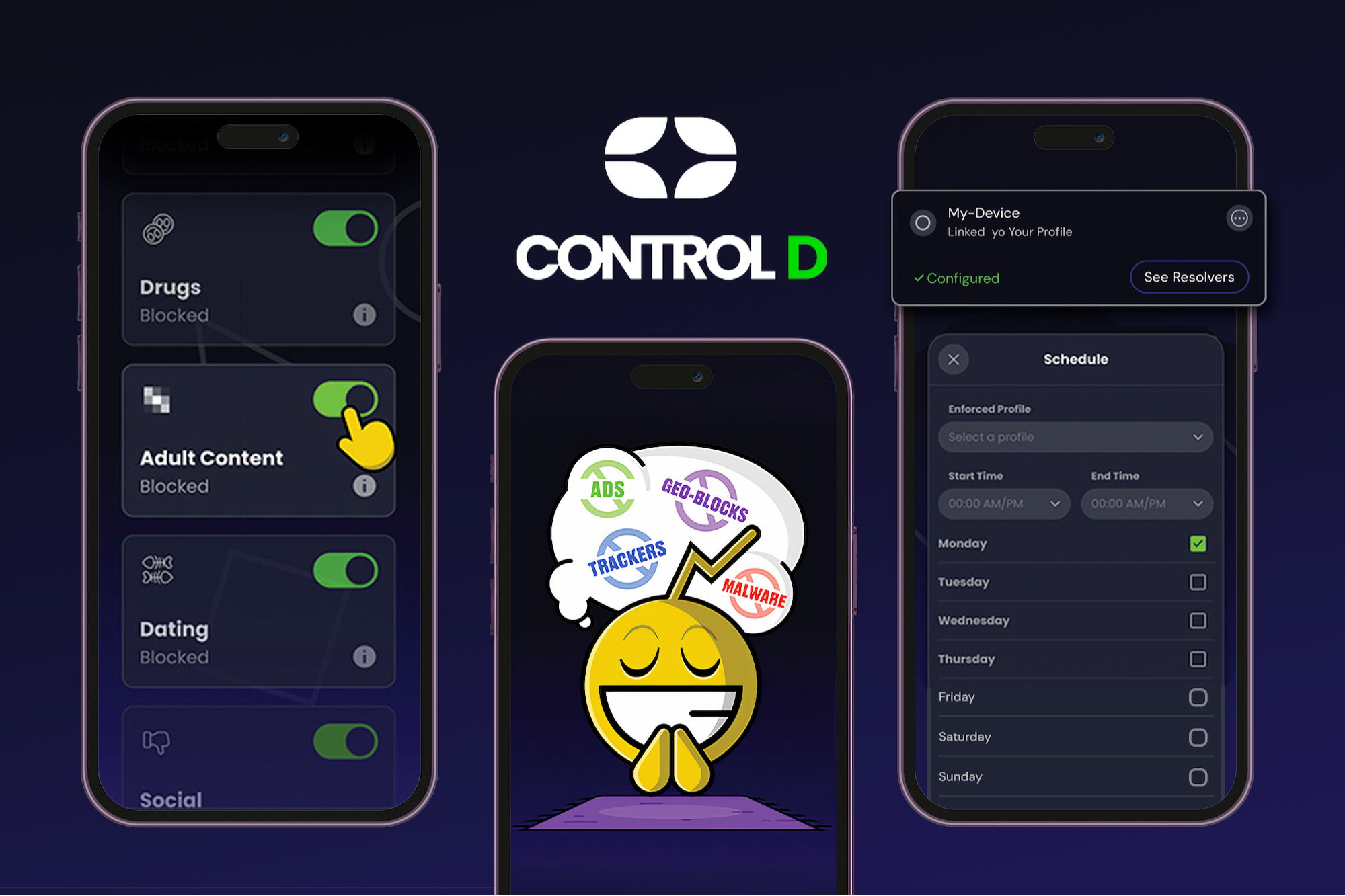
Disclosure: Our goal is to feature products and services that we think you’ll find interesting and useful. If you purchase them, Entrepreneur may get a small share of the revenue from the sale from our commerce partners.
According to TeamStage, 31 percent of employees waste about a half hour each day, and the top 10 percent of them can waste as much as three hours in a day. Part of that might be attitude, but the other part might be hangups caused by internet speed and advertisements. To nip that lost time in the bud, consider equipping yourself or your team with a tool to help stay on task.
From April 15 through 21, this five-year subscription to Control D Some Control Plan is on sale for just $34.97 (reg. $120). This is the best price for this deal online. This tool is designed to help users browse and use the internet faster while also blocking ads.
Control D is described as a “one-touch solution” for taking control over the productivity of your computer and internet usage. The deal supports use for up to ten devices, and it empowers each user to block advertisements, enjoy faster browsing, and set internet safety rules and restrictions for kids.
Control D’s bandwidth is substantial. It can accommodate up to 10,000 custom rules, block more than 300 servers, support multiple profiles, and unlimited usage. This robust and well-designed tool is a reliable option for any business leader who wants to liberate themselves or team members from distractions online.
Control D is rated a perfect 5/5 stars on Product Hunt.
Remember that from April 15 through 21, this 5-year subscription to Control D Some Control Plan is on sale for just $34.97 (reg. $120)—the best price on the web.
StackSocial prices subject to change.
AFFILIATE MARKETING
Grab Microsoft Project Professional 2021 for $20 During This Flash Sale
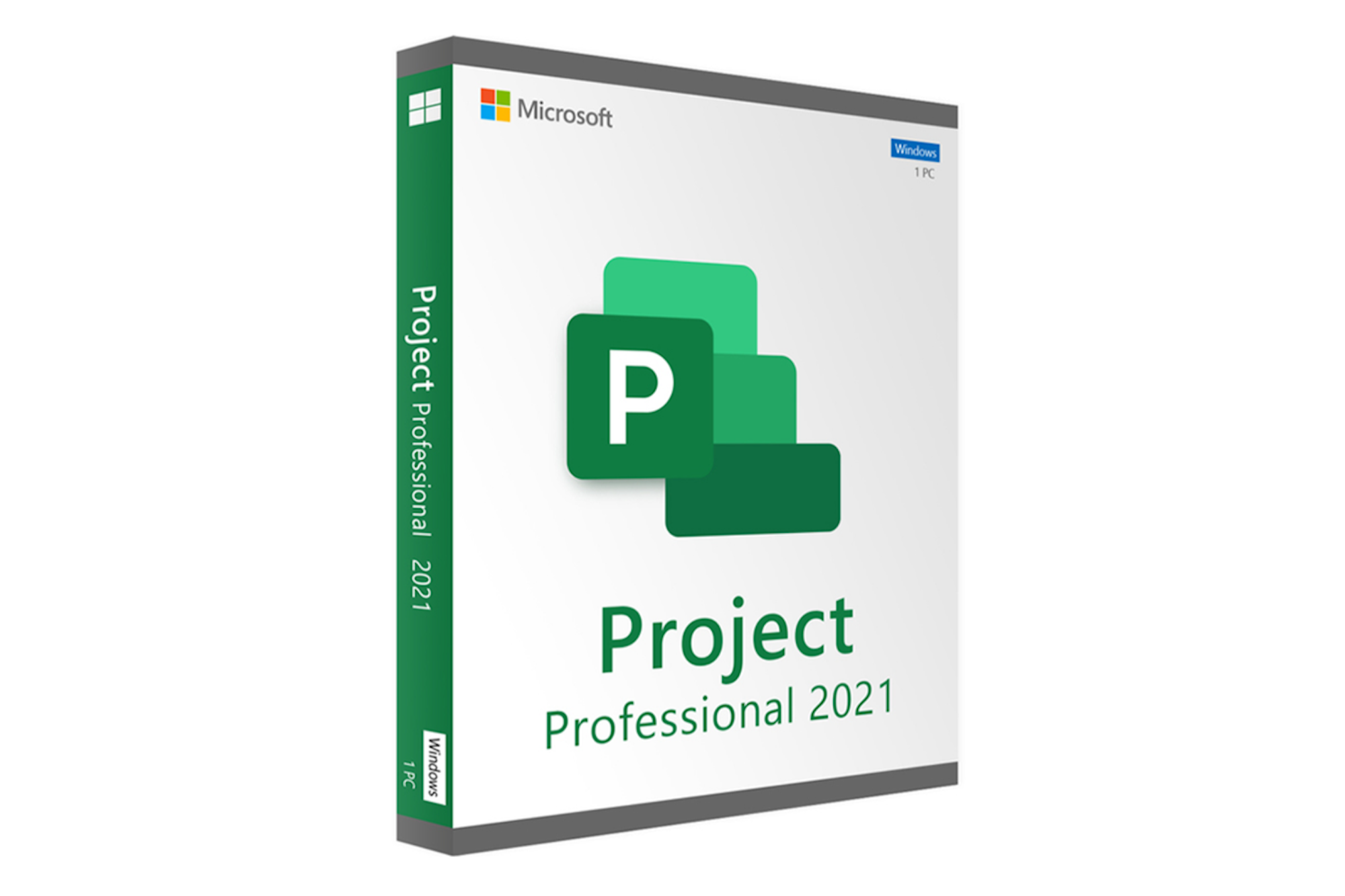
Disclosure: Our goal is to feature products and services that we think you’ll find interesting and useful. If you purchase them, Entrepreneur may get a small share of the revenue from the sale from our commerce partners.
If you’re in charge of a business and you don’t have a clear understanding of how to approach projects in an organized and effective manner, that’s a problem. Like many leaders before you, consider leaning on software that’s designed to streamline the project workflow for companies representing a wide range of industries.
A rate that will only be available from April 19 through 22, you can get Microsoft Professional 2021 for just $19.97 (reg. $249).
This well-reviewed software comes with a range of pre-built templates that you can use to set your project off on the right foot. It supports a number of helpful functions like building complex schedules with varying timelines, auto-populating those schedules in instances where it can, and submitting timesheets that can be distinguished by project work and non-project work.
Some additional features of Microsoft Project Professional that can help entrepreneurs and their teams include what-if scenario generation capabilities. Microsoft Project Professional also allows you to sync projects on your local server with those online, which is massively helpful for remote teams.
Its comprehensive and well-curated offerings are part of why Project Professional is rated an average of 4.7/5 stars on the Entrepreneur Store.
Don’t miss this limited-time opportunity to make a worthwhile investment in your business for the price of a beer at the ball game.
A price that will only last from April 19 through 22, you can get Microsoft Professional 2021 for just $19.97 (reg. $249).
StackSocial prices subject to change.
-

 PPC5 days ago
PPC5 days ago19 Best SEO Tools in 2024 (For Every Use Case)
-
SEARCHENGINES7 days ago
Daily Search Forum Recap: April 17, 2024
-
SEARCHENGINES6 days ago
Daily Search Forum Recap: April 18, 2024
-
SEARCHENGINES5 days ago
Daily Search Forum Recap: April 19, 2024
-

 MARKETING6 days ago
MARKETING6 days agoEcommerce evolution: Blurring the lines between B2B and B2C
-

 SEO6 days ago
SEO6 days ago2024 WordPress Vulnerability Report Shows Errors Sites Keep Making
-

 WORDPRESS5 days ago
WORDPRESS5 days agoHow to Make $5000 of Passive Income Every Month in WordPress
-

 WORDPRESS6 days ago
WORDPRESS6 days ago10 Amazing WordPress Design Resouces – WordPress.com News














